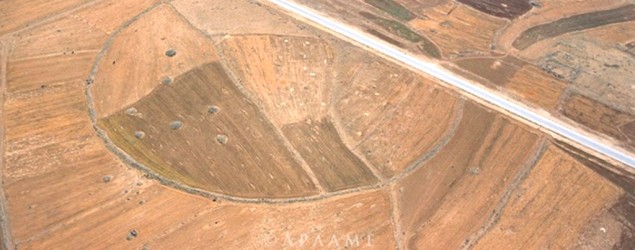Count Dracula might be a fictional character who makes the blood curdle on Halloween, but his historical namesake is not. Vlad III, known in his heyday as Dracula — or Dr?culea, in old Romanian — was a medieval prince with a figurative thirst for blood.
As his other nickname, "Vlad the Impaler," suggests, Vlad had a penchant for brutally punishing his enemies. However, much of what modern historians know about Vlad III comes from pamphlets and other texts
printed in the 15th century, both during and after Vlad's reign. The historical accuracy of these texts — many of which were written by Vlad's enemies — can't be confirmed.
Was Vlad III a monster, or a medieval ruler like any other? The world may never know for sure. But there are several lesser-known facts about the real Dracula that help explain why he may have earned such a nasty reputation. [
The Real Dracula: All About Vlad the Impaler]
Vlad the vengeful
Imagine spending your tumultuous teenage years as a political hostage whose fate hinged on the actions of your father, the ruler of a war-torn region in a different country. That's what Vlad III's adolescence was like.
In 1442, Vlad III and his younger brother, Radu, were handed over to Sultan Murad II, then-ruler of the Ottoman Empire. The young men were held hostage to ensure their father, ruler of the principality of Wallachia, remained loyal to the Ottomans during their ongoing war with Hungary.
During their captivity, Vlad and his brother were tutored in science, philosophy and the arts. They were also allegedly schooled in the
arts of war, receiving lessons in both horsemanship and swordsmanship from their Ottoman captors, according to Radu Florescu and Raymond McNally, former professors of history at Boston College, who wrote several books about Vlad III.
Some historians have argued that Vlad also learned the art of impalement during his time as a hostage, but that can’t be proven, according to Florin Curta, a professor of
medieval history and archaeology at the University of Florida. The Ottomans didn't invent impalement, and there's no way of knowing whether Vlad saw them deploy this gruesome punishment on their prisoners, Curta told Live Science. [
Busted: Medieval Torture's 10 Biggest Myths]
Regardless of what he learned from his captors, Vlad didn't take kindly to being held prisoner. On the contrary, his kid brother adjusted well to captivity, forging a friendship with the Sultan's son, Mehmet II, and eventually converting to Islam.
But Vlad felt little more than enmity for his captors, according to Elizabeth Miller, a research historian and professor emeritus at Memorial University of Newfoundland in Canada. This enmity may have been his motivation for siding with the Hungarians against the Ottomans when he eventually became ruler of Wallachia in 1448, Miller told Live Science.
Vlad the terrorist
Vlad's cruelty is well documented in historical texts, but what often goes overlooked is how he combined this cruelty with cunning to terrorize his enemies.
For example, his preferred method of execution, impalement, wasn't just a sadistic way to get rid of his opponents; it was also a good way to scare them away, according to Curta.
In 1462, Mehmet II (at the time, the Ottoman sultan), invaded Wallachia. When he arrived at the
capital city of Târgovi?te, he found it deserted. The rotting remains of Ottoman prisoners of war, each impaled on a spike, were the only soldiers there to greet him. Mehmet didn't retreat right then and there, but he certainly didn't gain any headway, Curta noted.
At one point during Mehmet's campaign to conquer Wallachia, Vlad III dressed his soldiers in Ottoman garb and led them on a midnight raid of the sultan's camp. Their goal was to kill the sultan as he slept in his tent — a goal they failed to accomplish. However, they did succeed in creating mass confusion among the Ottoman soldiers, according to Curta. The Ottomans stayed up until morning, slaughtering one another in the belief that their comrades were really the enemy in Turkish clothing.
"Impaling was used as a
form of terror— to terrorize the enemy coming to invade one's country," Curta said. "He had to do a lot of things with very limited resources. He actually used efficient methods to fight against his enemy without having that many men at his disposal."
Miller echoed that sentiment, noting that many historians have labeled Vlad's tactics against the Ottomans as "psychological warfare." In other words, these historians believe that the
notorious Dracula may not have been exceptionally cruel, but rather doing what he had to do to fight a military force much greater than his own, Miller said.
Vlad the vampire
Many historians have implied that Stoker's fictional Dracula was inspired by Vlad III, and some have even gone as far as to suggest that Vlad himself
drank human blood. In their book about the similarities between Stoker's Dracula and Vlad III — "In Search of Dracula" (Mariner, 1994) — Florescu and McNally cite a 15th-century German poem that paints Vlad as a blood drinker. The poem suggests that Vlad liked to dine among his impaled victims, dipping his bread in their blood, the authors wrote.
"This story was invented for the purpose of [Florescu and McNally's] argument," Miller said. What the poem actually says is that Vlad liked to wash his hands in the blood of his victims before he ate dinner, she added.
While admittedly still pretty gross, washing your hands in human blood and drinking human blood are two distinct things — not that either of these accusations can be historically proven. Yet, there is an actual link between Stoker's Dracula and a
mythical bloodsucking creature that allegedly inhabits the region adjacent to Vlad III's home principality of Wallachia.
In the northern Balkan Mountains, in
modern-day Serbia and Hungary, there are many folktales about a creature known as "moroi," according to Curta. The tales stem from the fact that in that region, most people practice Eastern Orthodox Christianity, and in that faith there is no notion of purgatory — the place where souls go for "purification" before being assigned their place in heaven or hell — as there is in the Roman Catholic faith, he added.
This lack of purgatory left some Orthodox Christians wondering what would happen to a child who died before he or she was baptized and assured a place in heaven, according to Curta.
"There was a very strong set of beliefs that these children would roam around for a while before actually going to hell or paradise," Curta said. "And in the process, they would feed on the blood of the cattle — not of the humans — which is why, in the Balkans, people would put a pot of milk at the gate of the stable. That way, the moroi would feed on that milk rather that on the blood of the animals."
Stoker's bloodsucking tale may have been influenced in part by such folklore, Curta said. However, these tales have nothing at all to do with the historical figure, Vlad the Impaler.






